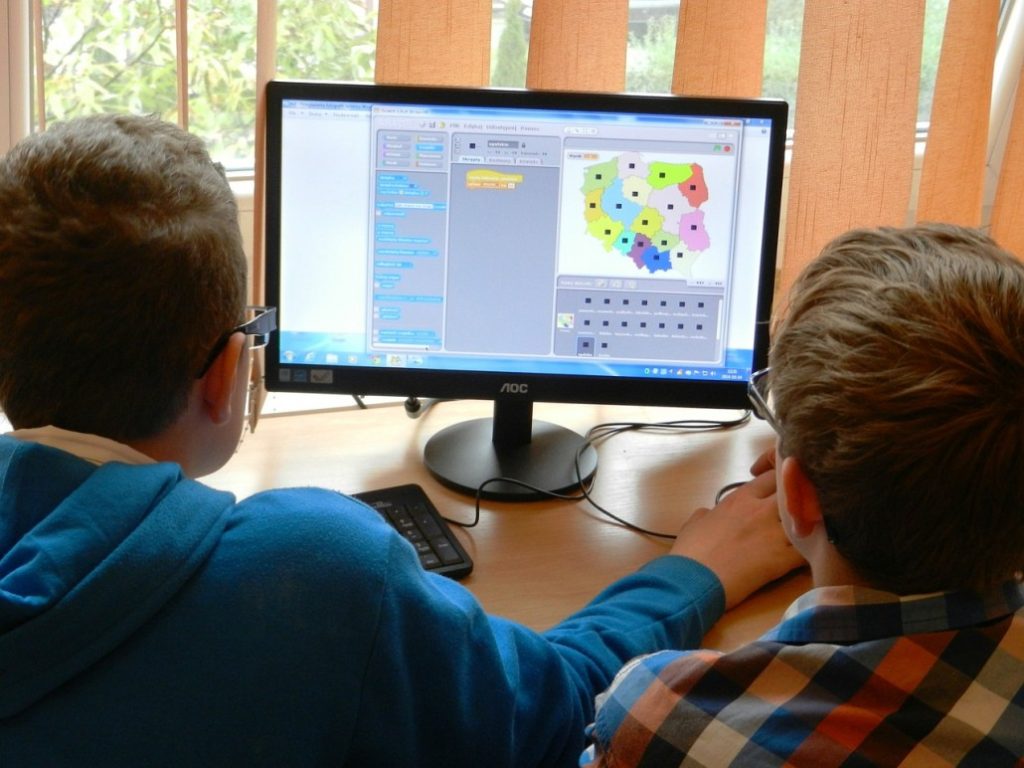
Digital Schools – Are they the future?
Digital Schools – Are they the future?
Let's find out
When Apple sold one million iPads in a year to schools and colleges in 2012, the first expression that everybody had was – Really? Fast forward to the year 2015. All 12,000 students at Northwest Suburban High School District 214, now own an iPad. Six-year-old kids carrying tablets to schools and pre-schools are not so uncommon in the Indian city of Bengaluru. Have times changed? Academics have been traditionally one of the slow adopters of technology, but now the trend is changing.
According to a 2014 report – Keeping Pace with K-12 Digital Learning, 316,000 students attended online schools in the USA. State virtual schools served 741,516 supplemental online course enrollments in 26 states in 2013–14. This charge has largely been driven by the concepts of blended learning and flipping the classroom. While Digital schools are growing and are being gradually becoming more mainstream, we take a look at why Digital Schools are going to be the future of education.
The case for Digital Schools?
- You don’t require physical space and are not time-bound – Students can now learn whenever they want and wherever they are. Digital schools virtually eliminate the requirement of time and space. Young students can learn when their parents are home. College students can learn whenever and wherever they want.
- Enables better learning – Digital schools enable the option of using interactive content, which has proven to be a more effective learning agent than static content. 70% of children between the ages of 2-5 can operate a computer mouse, while only 11% can tie their own shoes. Learning is greatly enhanced when there is interactive content involved. The basic premise that kids learn an act that involves an interactive elements is itself a big boost for the push for technology-enabled schools.
- Teachers support Ed-Tech – “74% of teachers say, education technology is a student – motivator”. Teachers are ready to embrace learning technologies to boost student learning outcomes. Digital schools enable dynamic interaction which establishes constructive learning and provides opportunities for cooperative learning. Using learning tools teachers can now use innovative methodologies to drive home learning that may not be possible in traditional schools.
- It is great for shy kids – Digital schools remove the awkwardness that is associated with shy kids when it comes to face to face communication. Virtual schools enable them to learn better than what they would do at a regular school at least till the time these students are more comfortable.
- Education is more personalized – Digital schools allow the use of tools that can track a student’s learning behavior in a more sophisticated pattern than in a traditional way of schooling. The analytics can clearly give a better understanding to virtual teachers on what the students are actually lacking, resulting in more personalized and interactive learning.
Given all these benefits that digi-schooling has, they have a fair share of drawbacks and challenges to cater to. Most noticeable of them are:
- Where is the budget? – Most schools and institutions lack the budget to set up a digital school, provide hardware to student and purchase eBooks in addition to existing physical books. Yes, iPads are not the only tablets available and there are cheaper Android alternatives available, they still require substantial budget allocation.
- Typing vs Writing – Let’s face it, typing on mobile and tablet devices is not as easy as on a PC, leave alone writing with hands. Even though newer apps are making typing faster on tablets, tablets still remain a content consumption device rather than a content creation device.
- Are your tablets being put to right use? – The biggest problem that an institution faces while giving out tablets and devices to students is monitoring their usage. While there are device monitoring software, they are additional cost implications on schools.
- The case of human to human interaction – While Digital schools are a boon for shy students, human interaction can never be replaced by virtual interactions for most students. Human to human interaction is required for the majority of children in their formative years for better growth. Digital Schools will never be able to provide that.
Can digital schools replace traditional schooling methods? Not really. Traditional schooling methods have withstood time and have not changed much, whereas other methods such as homeschooling have been around for a long time but never became mainstream. While Digital schools will never be able to replace traditional schools, they still would complement traditional schools to enable better learning by students.
Discover how a mobile-first training platform can help your organization.
KITABOO is a cloud-based platform to create, deliver & track mobile-first interactive training content.


